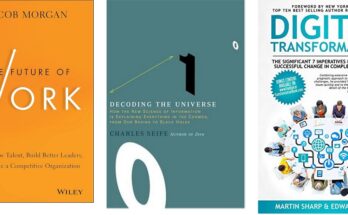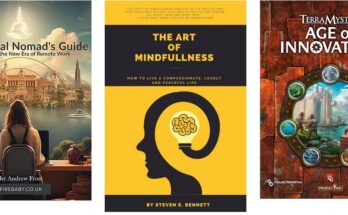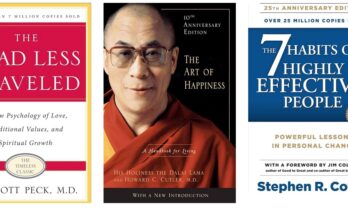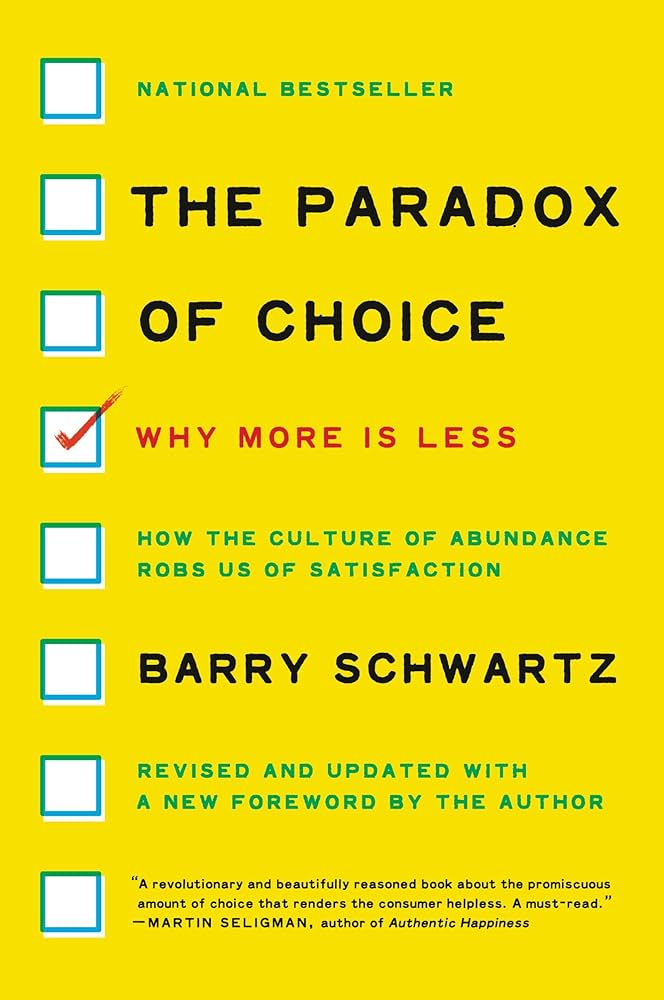
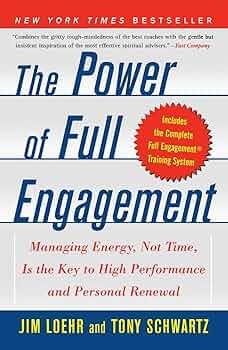
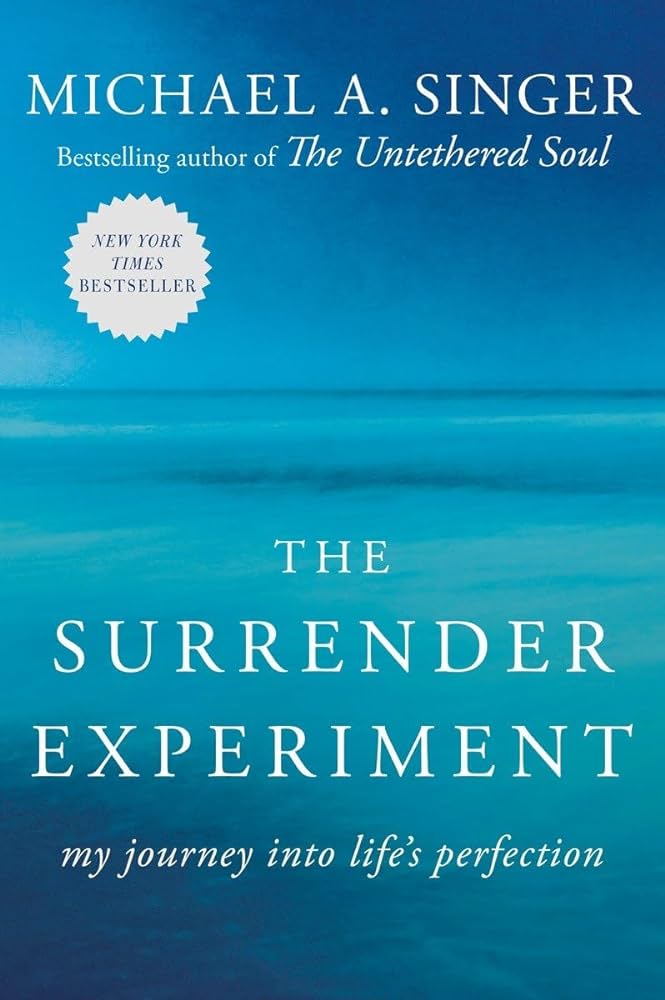
The Paradox of Choice: Why More Is Less" by Barry Schwartz vs The Power of Full Engagement" by Jim Loehr and Tony Schwartz vs The Surrender Experiment" by Michael A. Singer
This comparison examines three influential books: “The Paradox of Choice: Why More Is Less” by Barry Schwartz, “The Power of Full Engagement” by Jim Loehr and Tony Schwartz, and “The Surrender Experiment” by Michael A. Singer. Each book offers unique perspectives on decision-making, productivity, and life philosophy.
| Aspect/Book | “The Paradox of Choice” | “The Power of Full Engagement” | “The Surrender Experiment” |
|---|---|---|---|
| Author | Barry Schwartz | Jim Loehr and Tony Schwartz | Michael A. Singer |
| Publication Year | 2004 | 2003 | 2015 |
| Main Theme | Decision-making and its complexities | Balancing energy for peak performance | Embracing life’s flow and surrendering to the universe |
| Purpose | To explore how excessive choices can lead to anxiety and dissatisfaction | To provide strategies for managing energy, not time, to achieve high performance and personal renewal | To share the author’s journey of surrendering to life’s events and the peace it brought |
| Target Audience | General readers, psychologists, and policymakers | Business professionals, athletes, and general readers | General readers and spiritual seekers |
| Structure | Analytical and research-based | Practical guide with strategies and exercises | Autobiographical narrative |
| Key Concepts | Choice overload, satisficers vs. maximizers, decision fatigue | Energy management, physical/emotional/mental/spiritual energy, oscillation | Surrender, mindfulness, non-resistance |
| Writing Style | Academic yet accessible | Practical and motivational | Reflective and narrative |
| Impact on Readers | Encourages reconsideration of the value of choice | Provides tools for improving personal and professional life | Inspires a more relaxed and accepting approach to life |
| Criticisms | Can be repetitive; some argue it overstates the negative effects of choice | May be seen as too prescriptive; some concepts may feel familiar to self-help readers | Some may find the philosophy difficult to apply in practical terms |
| Legacy and Influence | Widely cited in discussions on consumer behavior and decision-making | Influential in business and sports coaching circles | Resonates with those interested in spiritual growth and mindfulness |
Detailed Comparison
“The Paradox of Choice: Why More Is Less” by Barry Schwartz
Main Theme and Purpose: Barry Schwartz delves into the concept of choice overload, arguing that while freedom of choice is essential for autonomy and well-being, an overabundance of choices can lead to negative consequences such as anxiety, indecision, and dissatisfaction. Schwartz’s primary aim is to demonstrate that more options do not necessarily equate to better outcomes.
Target Audience: The book targets a broad audience, including general readers curious about psychology, as well as professionals in fields such as marketing, psychology, and public policy. Its insights are particularly relevant to those interested in consumer behavior and decision-making processes.
Structure and Key Concepts: Schwartz structures the book around several core concepts:
- Choice Overload: Too many options can overwhelm consumers, making decision-making more difficult and less satisfying.
- Satisficers vs. Maximizers: Satisficers settle for “good enough” choices, while maximizers exhaustively seek the best possible option, often leading to regret and dissatisfaction.
- Decision Fatigue: The mental strain from making numerous decisions can lead to poorer choices and decision avoidance.
Writing Style: The book is written in an academic yet accessible style, combining research findings with real-world examples to illustrate points. Schwartz uses a methodical approach to present his arguments, ensuring that readers understand the theoretical underpinnings of his claims.
Impact on Readers: Readers are encouraged to reconsider their approach to choices in everyday life. The book prompts introspection on whether having fewer options might actually lead to greater happiness and satisfaction. It has influenced how individuals and organizations think about consumer choice and its psychological impacts.
Criticisms: Some critics argue that the book can be repetitive, hammering home the same points without enough variation. Others believe that Schwartz overstates the negative effects of choice, not sufficiently acknowledging situations where more options can be beneficial.
Legacy and Influence: Since its publication, “The Paradox of Choice” has become a seminal work in discussions about consumer behavior and decision-making. It is frequently cited in academic papers and has influenced various fields, including marketing, psychology, and behavioral economics.
“The Power of Full Engagement” by Jim Loehr and Tony Schwartz
Main Theme and Purpose: Jim Loehr and Tony Schwartz focus on energy management as the key to high performance and personal renewal. They argue that managing energy, rather than time, is crucial for achieving sustained high performance and well-being.
Target Audience: The book is aimed at business professionals, athletes, and anyone looking to improve their performance in various aspects of life. It is particularly relevant for those who feel overwhelmed by their schedules and are seeking strategies to enhance their productivity and balance.
Structure and Key Concepts: The book is organized around practical strategies and exercises to help readers manage their energy across four dimensions:
- Physical Energy: The foundation of all other energies, it includes aspects such as nutrition, exercise, and rest.
- Emotional Energy: The ability to manage emotions effectively to maintain positive energy levels.
- Mental Energy: Focus and cognitive clarity to enhance productivity.
- Spiritual Energy: Aligning actions with deeply held values and a sense of purpose.
Loehr and Schwartz introduce the concept of “oscillation”—the natural ebb and flow of energy—and advocate for regular recovery periods to maintain peak performance.
Writing Style: The book is written in a practical, motivational style, making it accessible and actionable. The authors use case studies and personal anecdotes to illustrate their points, making the content relatable and engaging.
Impact on Readers: Readers gain a comprehensive framework for managing their energy, leading to improved performance and personal well-being. The book provides actionable steps that can be easily integrated into daily routines, making it a valuable resource for those seeking to enhance their productivity and balance.
Criticisms: Some readers may find the book overly prescriptive, with concepts that feel familiar to those well-versed in self-help literature. Critics also argue that the book’s focus on energy management may overlook other important aspects of productivity, such as time management and environmental factors.
Legacy and Influence: “The Power of Full Engagement” has had a significant impact on business coaching and performance enhancement. Its principles are widely used in corporate training programs and by sports psychologists, influencing how individuals and organizations approach productivity and well-being.
“The Surrender Experiment” by Michael A. Singer
Main Theme and Purpose: Michael A. Singer’s book explores the concept of surrendering to life’s events and embracing the flow of the universe. Through his personal narrative, Singer demonstrates how letting go of control and accepting what life brings can lead to profound peace and success.
Target Audience: The book appeals to general readers interested in personal growth and spiritual development. It is particularly relevant for those seeking a more relaxed and accepting approach to life, and who are curious about mindfulness and non-resistance.
Structure and Key Concepts: “The Surrender Experiment” is structured as an autobiographical narrative, recounting Singer’s life journey and the lessons he learned about surrender and acceptance. Key concepts include:
- Surrender: Letting go of the need to control events and outcomes, and trusting in the flow of life.
- Mindfulness: Being present in the moment and accepting it without judgment.
- Non-resistance: Embracing what is happening, rather than fighting against it.
Singer illustrates these concepts through personal anecdotes, showing how surrendering led to unexpected opportunities and success.
Writing Style: The book is written in a reflective and narrative style, making it an engaging read. Singer’s storytelling approach allows readers to connect with his experiences on a personal level, making the philosophical concepts more relatable and accessible.
Impact on Readers: Readers are inspired to adopt a more relaxed and accepting attitude toward life’s events. The book encourages mindfulness and non-resistance, offering a path to greater peace and fulfillment. It resonates with those interested in spiritual growth and provides practical insights for integrating surrender into daily life.
Criticisms: Some readers may find the philosophy of surrender difficult to apply in practical terms, especially in situations where taking control seems necessary. Critics also argue that the book’s emphasis on acceptance might be misinterpreted as passivity or complacency.
Legacy and Influence: “The Surrender Experiment” has resonated with a wide audience, particularly those interested in mindfulness and spirituality. It has influenced readers to reconsider their approach to control and acceptance, promoting a more peaceful and harmonious way of living.
Conclusion
Each of these three books offers unique insights and practical advice for improving one’s life. “The Paradox of Choice” encourages readers to rethink the value of having numerous options, “The Power of Full Engagement” provides a comprehensive framework for managing energy to achieve high performance, and “The Surrender Experiment” inspires a more relaxed and accepting approach to life. Together, they offer diverse perspectives on decision-making, productivity, and personal growth, making them valuable reads for anyone seeking to enhance their well-being and fulfillment.

